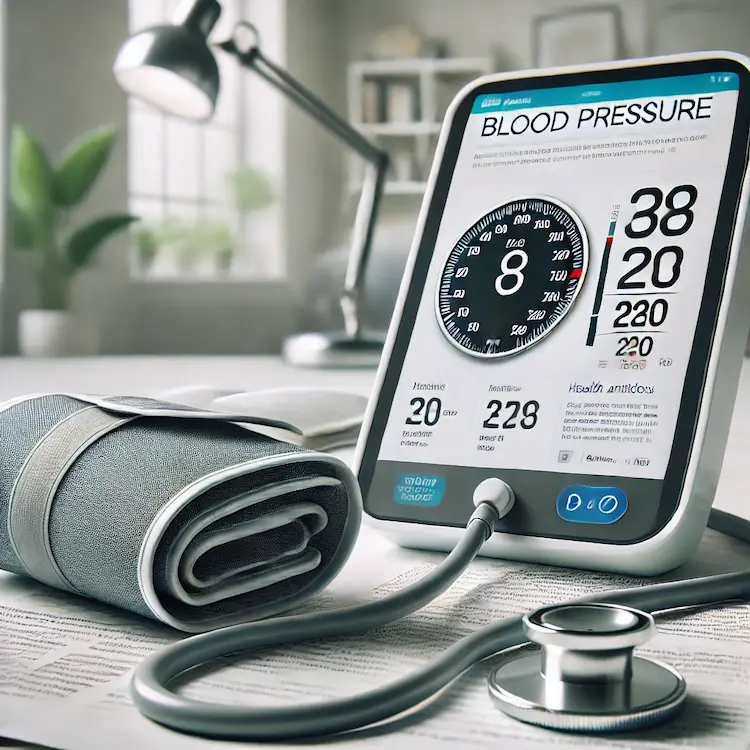Home Blood Pressure Monitoring (HBPM) has gained popularity as a tool for individuals to monitor their blood pressure outside a clinical setting. As more people turn to the internet for health-related information, the question arises: how can one find reliable, accurate, and credible information about HBPM online? In this article, we will explore different sources, tools, methods, and approaches to finding trustworthy information on HBPM, discussing their pros and cons, and providing actionable steps for managing blood pressure effectively.
What is Home Blood Pressure Monitoring (HBPM)?
Overview: Home Blood Pressure Monitoring (HBPM) allows individuals to measure and track their blood pressure in the comfort of their own homes. This method plays a critical role in managing hypertension and preventing heart-related complications. Accurate monitoring of blood pressure provides valuable insights for both individuals and healthcare providers.
Why It Matters: Reliable HBPM is essential for managing health conditions, especially hypertension. People with high blood pressure are at increased risk for heart disease, stroke, and kidney damage. By monitoring blood pressure at home, individuals can better understand their health and make informed decisions.
The Importance of Accurate HBPM:
- Prevention of Heart Disease: Detecting high blood pressure early can prevent heart-related issues.
- Personalized Care: It helps healthcare providers give more targeted advice and treatments.
- Reduced Hospital Visits: With accurate readings, patients may reduce the need for frequent hospital visits.
How to Find Reliable Information on HBPM Online
When looking for information online, it’s crucial to know how to evaluate the credibility of sources. Let’s break down how to find reliable information.
Identifying Credible Sources
- Government Websites: National health organizations such as the Centers for Disease Control and Prevention (CDC) or the World Health Organization (WHO) offer trustworthy health-related resources.
- Medical Institutions: Reputable hospitals or medical schools provide accurate and up-to-date information on HBPM.
- Peer-reviewed Journals: Research articles published in peer-reviewed medical journals such as The Lancet or American Journal of Hypertension often contain validated studies on HBPM.

Evaluating the Information
- Author Qualifications: Check the credentials of the author. Healthcare professionals, researchers, and medical institutions are reliable sources.
- Date of Publication: Ensure the information is up-to-date, especially regarding medical research and guidelines for HBPM.
- References and Citations: Credible websites usually provide references to scientific studies or expert opinions.
Common Red Flags
- Overly Promotional Content: Avoid websites that focus on selling products without providing reliable, evidence-based information.
- Unverified Claims: Be cautious of sites that make bold health claims without citing scientific studies or evidence.
- Lack of Transparency: Avoid sources that do not disclose their authors, sponsors, or sources of information.
Popular Methods and Tools for HBPM
Blood Pressure Monitors
Blood pressure monitors are the primary tools for HBPM. There are two main types of monitors:
- Manual Blood Pressure Cuffs: Requires a stethoscope and more skill to measure blood pressure.
- Automatic Blood Pressure Monitors: These digital devices are easier to use and provide quick, accurate readings.
Online Tools for Tracking
Many websites and apps allow users to track their blood pressure readings over time. Some popular tools include:
- My Blood Pressure Log: An online tool that helps users track their daily blood pressure readings.
- Health Mate by Withings: A mobile app that syncs with smart blood pressure monitors for tracking.
- Blood Pressure Companion: A user-friendly app with customizable features for logging and analyzing blood pressure trends.
Wearable Devices
Smartwatches with built-in blood pressure monitoring features, such as the Fitbit Charge or Samsung Galaxy Watch, provide real-time data and integration with health apps.
Comparing Different HBPM Tools
Let’s compare some of the most common tools for measuring and tracking blood pressure:
| Tool |
Ease of Use |
Accuracy |
Cost |
Pros |
Cons |
| Manual Cuff & Stethoscope |
Moderate |
High |
Low |
Accurate with proper technique |
Requires skill and practice |
| Automatic Blood Pressure Monitor |
Easy |
Moderate to High |
Moderate |
Quick and easy to use, no skill required |
Can be expensive and may have calibration issues |
| Wearable Devices (e.g., Smartwatches) |
Very Easy |
Low to Moderate |
High |
Convenient for daily tracking, integrates with apps |
May not be as accurate as traditional devices |
| Mobile Apps |
Easy |
Variable |
Low |
Helps track trends over time, some are free |
Accuracy depends on device used |
How to Ensure Accurate HBPM at Home
Choosing the Right Device
Selecting a good blood pressure monitor is the first step to ensuring accurate readings. When purchasing a device, consider:
- Size of the Cuff: Ensure the cuff fits your arm size for accurate readings.
- Accuracy Certifications: Look for devices approved by health organizations such as the FDA or European CE marking.

Best Practices for Accurate Measurements
- Take Multiple Readings: Measure your blood pressure two to three times per session to get an average.
- Use the Correct Posture: Sit with your back supported, feet flat on the floor, and arm supported at heart level.
- Avoid Caffeine or Exercise: Refrain from eating, drinking, or exercising for at least 30 minutes before taking a reading.
When to Seek Medical Help
If you consistently record high readings at home, it’s important to consult a healthcare provider. High blood pressure, if left untreated, can lead to severe health problems such as stroke, kidney failure, or heart disease.
The Impact of Reliable HBPM Information on Society
Accurate home monitoring can change the landscape of healthcare by:
- Empowering Patients: It allows individuals to take control of their health.
- Reducing Healthcare Costs: It helps in early detection of high blood pressure, reducing the need for frequent doctor visits.
- Improving Treatment Outcomes: Regular monitoring can help doctors adjust treatments more effectively.
Summary and Key Takeaways
- HBPM is essential for managing blood pressure and preventing long-term health issues.
- Reliable information about HBPM can be found through credible health organizations, medical institutions, and peer-reviewed studies.
- Different tools such as manual cuffs, automatic monitors, and wearable devices can be used to measure blood pressure. Choose the tool that fits your needs, budget, and preferences.
- Accuracy matters: Proper technique and regular monitoring are key to reliable results.

